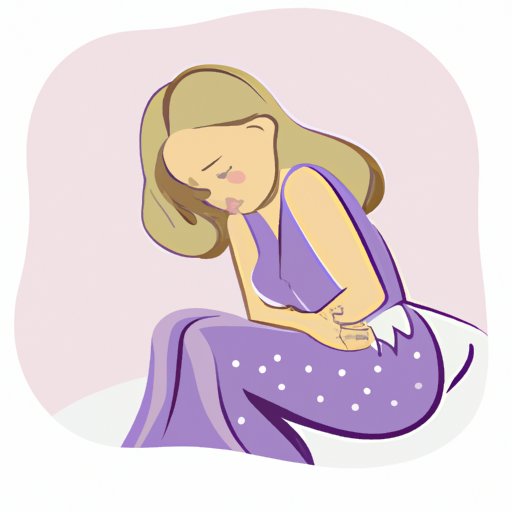
Introduction
For many women, recognizing the first symptoms of pregnancy is a pivotal moment that can bring excitement, fear, and uncertainty all at once. Knowing when these symptoms may occur can help women better understand their bodies and prepare for what’s to come. In this article, we’ll explore when the first symptoms of pregnancy may occur, what they are, and how to recognize them.
Early Signs of Pregnancy: What to Look for Before Taking a Test
Early pregnancy symptoms can be subtle, but they’re important to recognize. Some women may experience mild cramping, spotting, or changes in discharge as early as a few days after conception. Other common symptoms of early pregnancy include breast tenderness, fatigue, and nausea. It’s important for women to pay attention to their bodies and note any unusual changes, even before taking a pregnancy test.
From Conception to Confirmation: A Guide to Recognizing the First Symptoms of Pregnancy
From the moment of conception, a woman’s body begins to undergo significant changes. Implantation, which occurs about a week after conception, can cause light spotting and cramping. As the embryo grows, a woman may experience symptoms such as fatigue, mood swings, and morning sickness. By the time a pregnancy test can confirm the pregnancy, a woman may already have been experiencing symptoms for several weeks.
The 5 Most Common First Symptoms of Pregnancy: An Overview
The five most common early symptoms of pregnancy are nausea, fatigue, breast tenderness, frequent urination, and food aversions. Nausea, one of the most well-known symptoms of early pregnancy, can be managed by eating small, frequent meals and avoiding triggers such as strong smells or greasy foods. Fatigue may be overwhelming in the first trimester, but getting enough rest can help alleviate some of the exhaustion. Breast tenderness is another common symptom that can be managed with a supportive bra and ice packs. Frequent urination and food aversions can be inconvenient, but drinking plenty of fluids and trying new types of food can help.
How Can You Tell if You’re Pregnant?
In addition to the five most common early symptoms of pregnancy, there are many other symptoms that women may experience. These can include mood swings, constipation, headaches, and more. It’s important to note that not everyone experiences every symptom, and some women may have no symptoms at all. If you suspect you may be pregnant, the only way to confirm it is with a pregnancy test.
Pregnancy’s Sneaky Symptoms: How to Spot the Clues that You’re Expecting
While some early pregnancy symptoms may be well-known, there are other, more subtle symptoms that can be clues that a woman is expecting. These can include changes in appetite, sensitivity to smells, and vivid dreams. Like the more common symptoms, these symptoms can be managed with self-care and by paying attention to the body’s needs.
Recognizing Implantation Symptoms: A Precursor to Early Pregnancy
Implantation occurs about a week after conception, and can cause light spotting and mild cramping. It’s important for women to understand how these symptoms differ from a menstrual period. Not all women will experience implantation bleeding, but for those who do, it can be a sign that they are pregnant.
The Stages of Early Pregnancy: How to Recognize Symptoms Along the Way
The first few weeks of pregnancy can be filled with symptoms ranging from mild to severe. Morning sickness, fatigue, and dizziness are just a few of the symptoms that women may experience. It’s important to stay healthy during these early stages by eating a balanced diet, getting enough rest, and staying hydrated.
Conclusion
Recognizing the first symptoms of pregnancy can be an exciting and sometimes overwhelming experience. By paying attention to the body’s needs and being aware of what to expect, women can better prepare for this life-changing event. If you suspect you may be pregnant, it’s important to seek medical advice and confirm the pregnancy with a pregnancy test. For more information on early pregnancy symptoms, consult with your healthcare provider or a trusted online resource.




